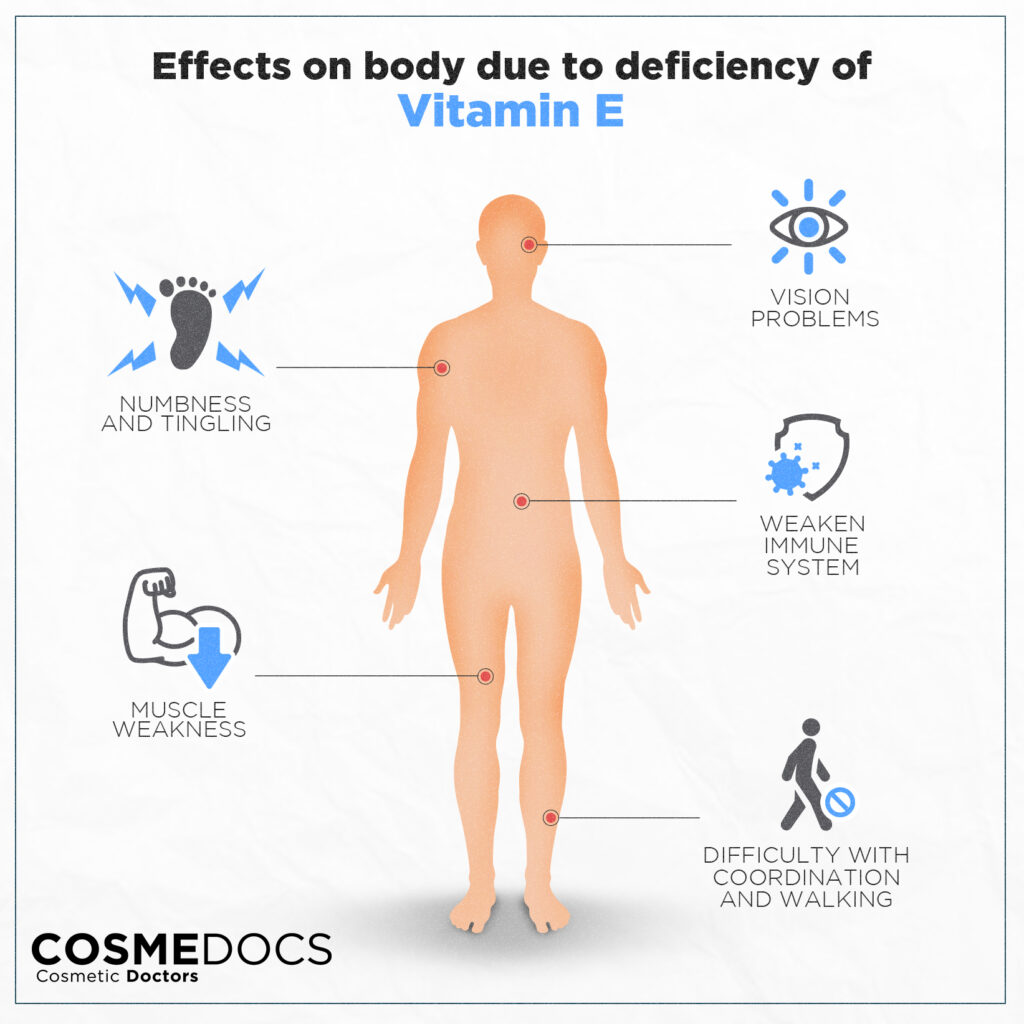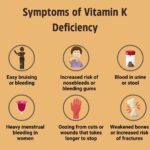Vitamin E deficiency, or hypovitaminosis E, is a rare yet serious condition that can result in neurological impairments, muscle weakness, and immune dysfunction. As a fat-soluble antioxidant, vitamin E (primarily alpha-tocopherol) plays a crucial role in protecting cell membranes from oxidative stress. Deficiency arises from either inadequate dietary intake, fat malabsorption, or genetic disorders affecting tocopherol transport.

The Biological Role of Vitamin E
Vitamin E functions as a lipid-soluble antioxidant, preventing the oxidation of polyunsaturated fatty acids in cell membranes. It is vital in:
- Neurological protection: Prevents oxidative damage to neurons
- Immune modulation: Supports T-cell function
- Gene expression regulation
- Prevention of hemolytic anemia in premature infants
Its antioxidant activity also contributes to cardiovascular protection and skin health.
Primary Causes of Vitamin E Deficiency
1. Fat Malabsorption Syndromes
Vitamin E absorption depends on dietary fat and bile salts. Conditions that impair lipid digestion or absorption include:
- Chronic pancreatitis
- Cystic fibrosis
- Biliary atresia
- Crohn’s disease
- Short bowel syndrome
2. Genetic Disorders
- Familial isolated vitamin E deficiency (AVED): Mutation in the TTPA gene, affecting tocopherol transfer protein
- Abetalipoproteinemia: Affects formation of lipoproteins required for vitamin E transport
3. Premature Birth
Infants born prematurely often have underdeveloped fat absorption mechanisms and limited vitamin E stores, making them vulnerable to deficiency.
4. Extremely Low-Fat Diets
Prolonged diets lacking essential fats and oils can reduce vitamin E intake and absorption.
Recognizing the Symptoms of Vitamin E Deficiency
Vitamin E deficiency primarily affects the nervous and muscular systems. Key clinical manifestations include:
- Peripheral neuropathy (numbness, tingling, loss of coordination)
- Muscle weakness (myopathy)
- Ataxia (unsteady gait)
- Retinopathy
- Immune dysfunction
- Hemolytic anemia (in infants)
In severe cases, prolonged deficiency may lead to irreversible neurological damage.
Diagnosis: Identifying Vitamin E Deficiency Accurately
Diagnostic confirmation involves clinical evaluation and laboratory testing:
- Serum alpha-tocopherol level: <5 µg/mL is considered deficient
- Alpha-tocopherol to total lipid ratio: Important in patients with altered lipid levels
- Neurological examination: Reflex testing, gait analysis
- Electromyography (EMG): To detect neuromuscular abnormalities
- Genetic testing: For inherited disorders like AVED
Food Sources Rich in Vitamin E
Ensuring a vitamin E-rich diet is essential for prevention and management.
| Food Item | Vitamin E Content (mg per serving) |
|---|---|
| Wheat germ oil | 20 mg per tbsp |
| Sunflower seeds | 7.4 mg per 1 oz |
| Almonds | 6.8 mg per 1 oz |
| Hazelnuts | 4.3 mg per 1 oz |
| Spinach (cooked) | 3.7 mg per ½ cup |
| Avocado | 2.1 mg per fruit |
| Peanut butter | 2.5 mg per 2 tbsp |
Incorporating these foods into daily meals supports adequate vitamin E intake.
Treatment: Restoring Vitamin E Levels
Supplementation
- Oral Vitamin E: Standard treatment involves alpha-tocopherol supplementation, ranging from 200–1,000 IU/day based on severity and cause
- High-dose therapy: Required in genetic conditions like AVED, often ≥1,500 IU/day
- Intramuscular injections: Used when oral absorption is compromised
Addressing Underlying Causes
Treatment of malabsorption syndromes or switching medications that interfere with fat absorption is essential for sustained improvement.
Prevention Strategies for Vitamin E Deficiency
1. Balanced, Nutrient-Rich Diet
Regular consumption of vitamin E-rich foods should be encouraged, particularly in populations at risk (e.g., children, elderly, people on restrictive diets).
2. Monitoring High-Risk Individuals
Patients with cystic fibrosis, liver disease, or fat-malabsorption disorders require periodic vitamin E screening and early intervention.
3. Prenatal and Neonatal Care
Vitamin E supplementation protocols for preterm infants can prevent retinopathy and hemolytic anemia.
4. Public Health Measures
Educational programs and dietary guidelines promoting awareness of fat-soluble vitamin intake can reduce deficiency-related complications.
Complications of Untreated Vitamin E Deficiency
Failure to detect and treat vitamin E deficiency may result in:
- Permanent neurological deficits
- Progressive vision loss (retinal degeneration)
- Weakened immune responses
- Developmental delays in children
Prompt treatment halts progression and may reverse symptoms if addressed early.
Vitamin E deficiency, though uncommon, can have profound health consequences if unrecognized. Preventive nutrition, timely diagnosis, and appropriate supplementation are key to safeguarding neurological function and immunity. Through awareness, early intervention, and targeted treatment, we can effectively mitigate the risks associated with vitamin E deficiency and ensure optimal health outcomes.

